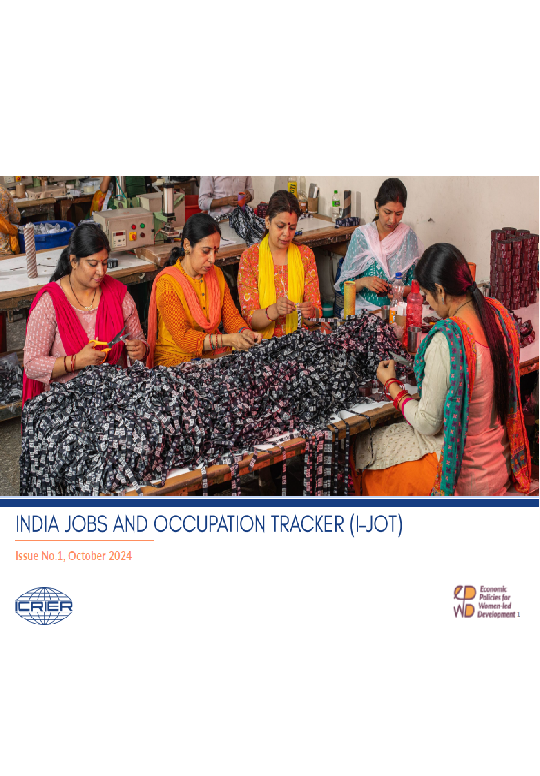
The objective of India Jobs and Occupation Tracker (I-JOT) – a quarterly publication from ICRIER – is to make labour market data as easily accessible and comprehensible as GDP statistics.. The first issue, drawing on the data from the Periodic labour Force Survey (PLFS), offers an in-depth analysis of India’s urban labour market trends for Q2:2024. Key findings include:
• Resilient Labour Market: India’s urban labour market remains strong, despite a cyclical slowdown in Q2 2024 due to election-related uncertainty (see below table).
• Growing Feminisation: More women are joining the urban workforce, taking on diverse occupational roles; however, a significant gender gap remains.
• Widespread Regional Improvements: Most states and Union Territories report higher participation and employment ratios and lower unemployment rate.
• Lack of Structural Transformation: Decline in the share of industrial employment and a rise in share of agricultural employment within urban areas, indicate limited structural transformation of the economy.
• Need for High-Skill Jobs: While adequate jobs are being created, these are mostly low-and medium-skilled jobs: one out of six urban male worker is a salesperson, one out of 12 is a driver, and only one out of 50 is an ICT professional. The is an urgency to create more higher skill employment opportunities to better utilise the available talent.






